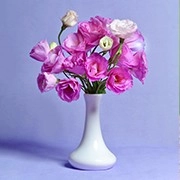Color Signals Decoded

Hey Lykkers! Ever been staring at those flashy trading screens and wondered, "Why all these colors? What do gold and blue even mean here?" It's like stepping into a sci-fi movie with numbers and charts dancing all over your monitor.
But don't worry — those colors aren't just there to look cool. They actually tell a story about the market's mood, or what pros call "market sentiment."
Let's have a friendly chat about why color coding matters, especially the golden hues versus the calming blues you see on financial charts, and how you can use this knowledge to get a leg up in your trading game. Sound good? Awesome! Let's dive in.
What Is Market Sentiment Anyway?
Before we talk colors, let's break down market sentiment. Imagine the stock or forex market as a giant crowd at a concert. Some people are super excited (bullish), some are cautious (neutral), and others are ready to leave early (bearish). Market sentiment reflects these collective feelings — it's basically the crowd's mood about where prices are headed.
Is calcium's role in the body more than just structural? See How This Mineral Shapes Strength And Health!
LTV vs CAC: The Battle That Decides Your Business's Future!
How Does RNA Really Build Proteins? Strange Molecular Clues Might Shock You With Gene Magic!
The One Pain You Should Never Brush Off—Your Dentist Wants You to Know!
The Shocking Truth Behind 'Perfect' Pregnancies—Why Everything You Know Is Wrong!
Can't Catch Your Breath? The Terrifying Truth Doctors Hide from You!
Traders watch market sentiment to predict if prices will rise, fall, or stay flat. And guess what? Colors on trading charts help quickly convey this mood.
Why Color Coding? It's All About Quick Visual Cues
In fast-moving markets, traders don't have time to analyze every single number. So, colors act as a shorthand, allowing traders to absorb complex info in seconds.
Think of it like traffic lights: red means stop, green means go. Colors help traders decide quickly whether to buy, sell, or hold.
"Colors in trading charts aren't decoration — they're data. A good trader learns to see emotion in every shade." — Steve Nison, American financial analyst and author of Japanese Candlestick Charting Techniques.
The Meaning Behind Gold on Trading Charts
Gold is a powerful color. In trading, it usually symbolizes value, strength, and sometimes caution.
Bullish Indicator: Golden or yellow shades often highlight upward trends or strong buying pressure. It signals that the asset might be gaining value or experiencing a positive momentum.
High-Value Assets: Gold is also used to represent assets like gold futures or commodities linked to precious metals, emphasizing their intrinsic value.
Attention Grabber: Because gold pops on screens, it's often used to highlight key price points, such as resistance levels where prices may struggle to rise further.
So, when you see gold on a chart, think of it as the market saying, "Hey, something valuable or strong is happening here!"
Blue: The Cool Calm of Market Sentiment
Now, blue — it's the chill color in the financial palette.
Neutral or Stable: Blue often indicates a neutral market or steady price action. It's like the market taking a breather, neither soaring nor diving.
Bearish Signals: Sometimes, darker blues or shades leaning toward cool tones can signal selling pressure or downward trends, but less aggressively than red.
Trust and Reliability: Blue is associated with trust and stability, so it's often used to show dependable trends or long-term averages.
In short, blue tells you the market is either steady or gently cooling off — a signal to watch but maybe not rush in just yet.
How Traders Use Gold and Blue Together
The real magic happens when you see gold and blue side by side. This contrast helps traders spot shifts in momentum quickly.
Gold-to-Blue Shift: If a chart moves from gold to blue, it might mean a bullish trend is losing steam and settling into a stable or cautious phase.
Blue-to-Gold Shift: A change from blue to gold can signal an awakening bull market — the crowd is getting excited again, and prices could rise.
By paying attention to these color shifts, traders get early hints about market turns and can adjust their strategies accordingly.
Pro Tips for Lykkers: Using Color Coding in Your Trading
1. Don't Rely Solely on Color: Colors are helpful, but always check underlying data like volume and price action.
2. Customize Your Charts: Many platforms let you adjust colors. Find a palette that makes sense to you — clarity beats flashiness!
3. Watch for Patterns: Look for consistent color changes at key support/resistance levels — that's often where big moves happen.
4. Combine with Other Tools: Use colors alongside technical indicators (like RSI, MACD) for a fuller market picture.

Final Thoughts: Seeing Beyond the Colors
So, Lykkers, the next time you open your trading screen and see gold and blue splashed across charts, remember — it's more than just pretty colors. It's the market's way of whispering secrets about strength, caution, and calm.
Mastering these color cues can help you become a smarter, faster trader — and that's exactly the edge you want.

 · News team
· News team